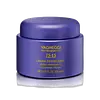What's inside
What's inside
 Key Ingredients
Key Ingredients

 Benefits
Benefits

 Concerns
Concerns

 Ingredients Side-by-side
Ingredients Side-by-side

Water
Skin ConditioningCetearyl Alcohol
EmollientC12-15 Alkyl Benzoate
AntimicrobialEthylhexyl Palmitate
EmollientPropanediol
SolventCetearyl Glucoside
EmulsifyingCaprylic/Capric Triglyceride
MaskingPassiflora Edulis Seed Oil
EmollientGlyceryl Stearate
EmollientPhenoxyethanol
PreservativeParfum
MaskingEthylhexylglycerin
Skin ConditioningTheobroma Grandiflorum Seed Butter
Skin ConditioningPropylene Glycol
HumectantSodium Cetearyl Sulfate
CleansingSodium Lauryl Sulfate
CleansingSodium Gluconate
Skin ConditioningBHT
AntioxidantCitric Acid
BufferingPropyl Gallate
AntioxidantCI 19140
Cosmetic ColorantCI 15985
Cosmetic ColorantCI 16035
Cosmetic ColorantCI 42090
Cosmetic ColorantWater, Cetearyl Alcohol, C12-15 Alkyl Benzoate, Ethylhexyl Palmitate, Propanediol, Cetearyl Glucoside, Caprylic/Capric Triglyceride, Passiflora Edulis Seed Oil, Glyceryl Stearate, Phenoxyethanol, Parfum, Ethylhexylglycerin, Theobroma Grandiflorum Seed Butter, Propylene Glycol, Sodium Cetearyl Sulfate, Sodium Lauryl Sulfate, Sodium Gluconate, BHT, Citric Acid, Propyl Gallate, CI 19140, CI 15985, CI 16035, CI 42090
Water
Skin ConditioningSodium Chloride
MaskingSodium Laureth Sulfate
CleansingSodium Cocoyl Glutamate
CleansingDecyl Glucoside
CleansingButylene Glycol
HumectantCeteareth-60 Myristyl Glycol
EmulsifyingCoco-Glucoside
CleansingGlyceryl Oleate
EmollientSodium Methyl Cocoyl Taurate
CleansingCopper Gluconate
Skin ConditioningZinc Gluconate
Skin ConditioningIsopropyl Alcohol
SolventManganese Gluconate
Skin ConditioningCitric Acid
BufferingPhytosphingosine
Skin ConditioningAsiaticoside
AntioxidantWater, Sodium Chloride, Sodium Laureth Sulfate, Sodium Cocoyl Glutamate, Decyl Glucoside, Butylene Glycol, Ceteareth-60 Myristyl Glycol, Coco-Glucoside, Glyceryl Oleate, Sodium Methyl Cocoyl Taurate, Copper Gluconate, Zinc Gluconate, Isopropyl Alcohol, Manganese Gluconate, Citric Acid, Phytosphingosine, Asiaticoside
 Reviews
Reviews

Ingredients Explained
These ingredients are found in both products.
Ingredients higher up in an ingredient list are typically present in a larger amount.
Citric Acid is an alpha hydroxy acid (AHA) naturally found in citrus fruits like oranges, lemons, and limes.
Like other AHAs, citric acid can exfoliate skin by breaking down the bonds that hold dead skin cells together. This helps reveal smoother and brighter skin underneath.
However, this exfoliating effect only happens at high concentrations (20%) which can be hard to find in cosmetic products.
Due to this, citric acid is usually included in small amounts as a pH adjuster. This helps keep products slightly more acidic and compatible with skin's natural pH.
In skincare formulas, citric acid can:
While it can provide some skin benefits, research shows lactic acid and glycolic acid are generally more effective and less irritating exfoliants.
Most citric acid used in skincare today is made by fermenting sugars (usually from molasses). This synthetic version is identical to the natural citrus form but easier to stabilize and use in formulations.
Read more about some other popular AHA's here:
Learn more about Citric AcidWater. It's the most common cosmetic ingredient of all. You'll usually see it at the top of ingredient lists, meaning that it makes up the largest part of the product.
So why is it so popular? Water most often acts as a solvent - this means that it helps dissolve other ingredients into the formulation.
You'll also recognize water as that liquid we all need to stay alive. If you see this, drink a glass of water. Stay hydrated!
Learn more about Water